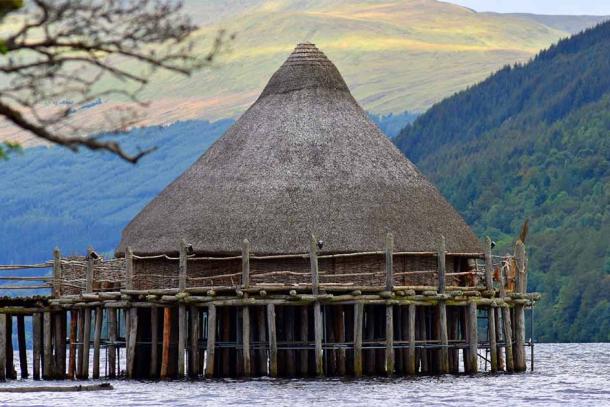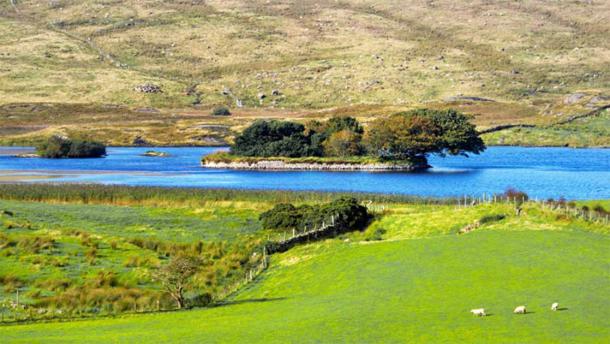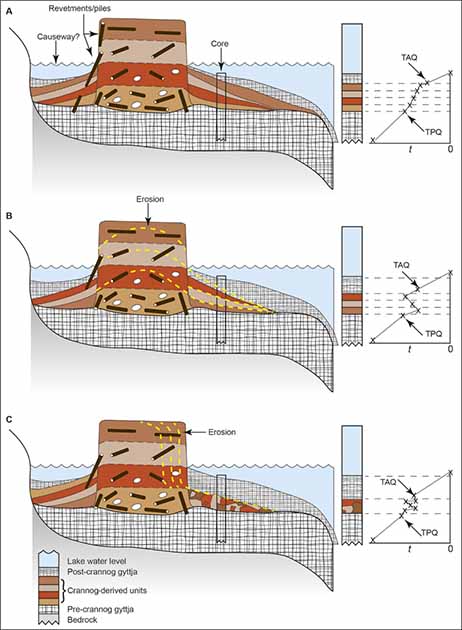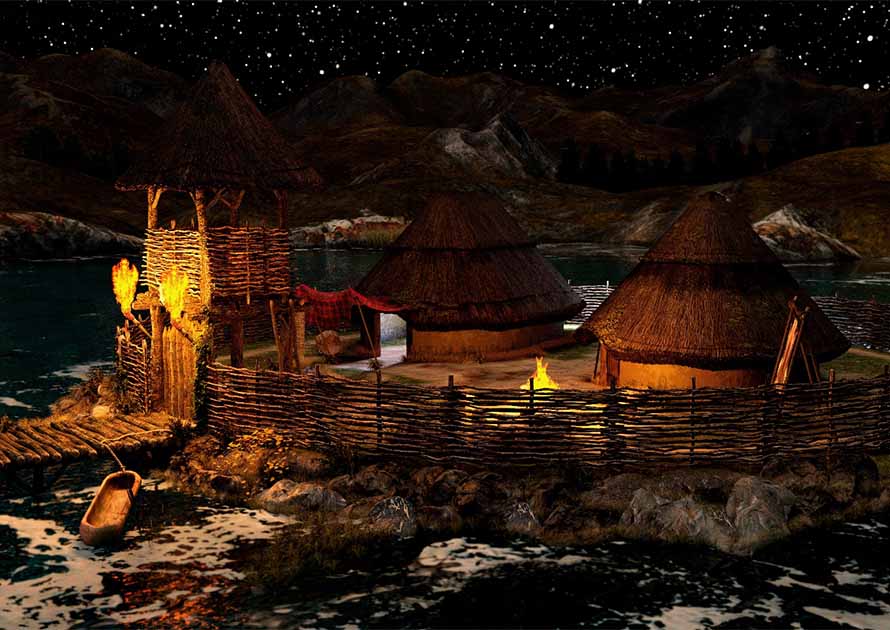Ancient Elites in North-western Europe Enjoyed High-Island Living
Archaeologists in the UK have shown how ancient elite families retained their command over communities in the medieval world crannogs in north-western Europe. They controlled the communities they ruled from offshore homes located on enhanced islands in lakes and estuaries.
While the elites of Ancient Egypt let their hair down in vast stone palaces, and as the ruling classes of South America hosted parties in temple-pyramids, ancient landlords in the islands of Ireland and Great Britain commanded their power over communities from the safety of artificial luxury islands.
Crannogs: From Iron Age Houses to Medieval Control Centers
In prehistoric Ireland, Scotland and Wales, “crannogs” were generally wooden circular structures built on islands in lakes and in river estuaries. While the vast majority of ancient populations lived in mud and wattle huts on the surrounding shores and fields, societal elites enjoyed the relative safety of their “gated” crannogs.
- Advanced Scottish Culture Stopped Romans Taking All Of Britannia
- Diver’s 5,500-Year-Old Discovery Hauls History of Scottish Crannogs Into Question

Just one of countless Iron Age crannogs that once dotted the Scottish Highlands (this one is a faithful reconstruction), which have now been proven to have developed into elite party palaces in the medieval period. (DMac / Adobe Stock)
However, understanding day to day life at crannogs has always been something of a mystery to archaeologists, for until the age of underwater archaeology little material was available to study. But now, a new study has determined that elite families “displayed their power and wealth through elaborate parties in crannogs.”

Figure 1 from the Antiquity study: a) Map of crannogs recorded in the dataset; b) age distribution for Scottish and Irish crannog radiocarbon dates using median ages; c) generalized stratigraphic model of a lake crannog and associated sediment inputs. (Antiquity Publications Ltd)
Crannogs: Ancient Structures Recently Revised, Twice!
Until 2019 researchers generally agreed that people built crannogs in the Iron Age (800 BC - 43 BC).
But this all changed after the publication of an earlier 2019 paper in the journal Antiquity (entitled: Neolithic crannogs: rethinking settlement, monumentality and deposition in the Outer Hebrides and beyond) that demonstrated “at least some of Scotland’s nearly 600 crannogs are much, much older.” In fact, this would make them nearly three thousand years older, putting them firmly in the Neolithic era, as early as 2500 BC.
Now, Professor Antony Brown of UiT Arctic University of Norway, lead author of a new study published in the journal Antiquity, says that between 4,000 BC and the 16th century AD, “hundreds of crannogs were created in Scotland, Wales and Ireland.”
Further illustrating how central the crannog was to ancient communities of these regions, the 1998 book “ The Archaeology of Lake Settlement in Ireland” informs that there are an estimated “1,200 crannogs in Ireland” alone.

Lough Na Cranagh. Prehistoric crannog, a defensive man-made island, in Lough of the Crannog on top of sea cliffs of Fair Head. Ballycastle, N. Ireland. (David Matthew Lyons / Adobe Stock)
Crannogs Were Also For Parties, Trade, and Communications
Professor Brown said ancient builders first selected shallow reefs in lake beds and on the sides of river estuaries. Then they built up these islands with “stone, timber and peat - to a diameter of nearly 30 meters (100 feet),” said the researchers.
The new study explains that such wetland sites are “much more difficult to study than those on land,” however, the team of archaeologists explored three submerged crannogs gathering organic samples for their analysis.
Dr. Brown told LiveScience that lakes are still and shallow around crannogs and that archaeological materials “never wash away." Sediment DNA samples (sedaDNA) were taken from a crannog in Scotland that was occupied between 500 BC to 10 AD and from two sites in Ireland dated to between 650 to 1300 AD.

A generalized model of a typical crannog and how it is effected by erosion. The small right side figures are too scientific for this article. (Antiquity Publications Ltd)
The SedaDNA analysis revealed that people in ancient Scotland, Wales and Ireland were cultivating cereal plants on crannog islands. Furthermore, the team of researchers think traces of bracken ferns ( Pteridium) were brought to the island to fill bedding and for use in the construction of roofs. And common to all three sites was “a lot of DNA evidence suggesting “feasting, partying, trade and communication.”
- Fakes and Controversy on the River Clyde: The Case of Dumbuck Crannog
- Houses from 3,000 Years Ago Are Among Best-Preserved of the Era in Britain
Evidence of cows, sheep, pigs and goats kept on these ‘island palace’ sites and their slaughter for feasting and ceremonies was identified at all three crannog sites.
Dr. Brown and his team of scientists interpreted this new data against previous studies into samples of pollen and animal bones gathered at other crannogs. Based on these foodstuffs it was concluded that, while crannogs functioned as farmsteads during the Iron Age, they evolved into “elite gathering places” in the medieval period.
Top image: Celtic crannog representation. Source: photosvac / Adobe Stock
By Ashley Cowie




















Comments
There’s no proof the ancient people had so-called ‘elites’ like the so-called ones today. Why would they?
Nobody gets paid to tell the truth.